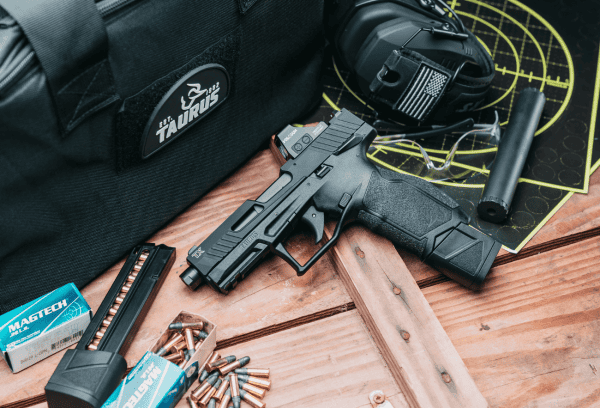American Handgunner Guide To Picking Your Nose
— Um … Bullet Noses, That Is …
Some people are natural nose-pickers! Picking their nose comes naturally to them and they get the results they want. Others need to think about their noses, digging deep, to get the most payload. Lastly, the out of touch picker just asks someone to pick their nose for them. What kind of picker are you?
A Guide
Of course we’re talking bullet-nose profiles. What were you thinking? Oh … you thought that other nose picking thing, eh? Nope. Not here. We’re talkin’ bullets. Handguns have the most bullet-nose profiles to choose from, especially from cast bullets. This little guide will describe the functions and attributes of each bullet-nose style. So sit back, relax and learn something about nose-picking.
Cast Contenders
Wadcutters — These blunt-nosed beauties are popular with Bullseye and PPC shooters. Their blunt noses cut clean holes, possibly stretching their edge into the next ring, giving them a higher score.
Semi-Wadcutter — These bullets are more aerodynamic than wadcutters and have a nose with broad shoulders. Known game-getters, this is a very popular style bullet. They penetrate deeply
Radiused Flat-Nose — Are commonly referred to as “cowboy” styled slugs. Shoulder free and just a hint of meplat (the flat part of the bullet nose) they’re usually accurate, make a decent wound channel and cycle well through lever guns.
LBT LFN — Lead Bullet Technology, the brainchild of Veral Smith, he designed these modern cast bullets for optimal performance. His Long Flat Nose design, LFN, is popular because it’s flat shooting, disrupts a lot of tissue, accurate — and is effective at killing game. It’s like a radiused flat-nose, only more meplat, to cause more tissue damage. Sounds technical but it ain’t.
LBT WFN — Wide Flat-nosed bullets are like the proverbial flying brick. Wider than an LFN, they are meant to be game stoppers delivering maximum wound damage, but are not very aerodynamic.
Round Nosed — As the name implies, these bullets have round noses, usually for easy, consistent feeding.
Hollow Points — These empty-headed bullets have holes in their head to promote expansion. They can be made in any of the bullet noses listed above. Bullet hardness determines how much expansion takes place, along with the velocity driven. Usually, the faster the bullet is driven and softer the alloy, the more violent the expansion.
Jacketed Bullets
Jacketed bullet shooters have fewer nose profiles to pick from. Fear not, jacketed bullets are very effective and can generally be driven faster than their cast cohorts. Handgun jacketed bullets are divvied up into basically four groups.
Soft Point — These jacketed bullets have a soft-nose of lead exposed, promoting some expansion, but not much. Made more for deep penetration, they are good hunting bullets.
Jacketed Hollow-Points — Made with expansion in mind, usually a top defensive and hunting bullet, the expanded bullet creates a larger wound channel, but with less penetration.
Full-Metal Jacket — As the name implies, this is a fully encapsulated lead core bullet, usually fired in semi-auto pistols. Round noses promote trouble-free feeding and full-jackets deep penetration.
Spitzer Style with Insert — the least common, these bullets re usually used in specialty guns such as the .460 and .500 S&W for long range, flatter shooting results while hunting.
Harder Than It Looks
As you can see, a lot of thought is involved in picking your nose for getting the best results. Besides nose style, we’ve yet to discuss alloy hardness and bullet lubes for cast bullets. Then there’s the choice of plain base or gas checked bottoms. Powder Coating, of which I’m a firm believer in its attributes, is another option.
Jacketed bullets have far less options than their cast brethren. Besides nose-styles, cannelures are about the only other option. Cannelures are useful for crimping bullets into place, while non-cannelure are used for taper crimped bullets used in semi-autos, where the cartridge seats on the case neck.
Who would have thought there was so much involved in picking your nose, let alone, the right bullet, to get the results you want and need? There’s nothing wrong with being picky — if you’re after certain results.






